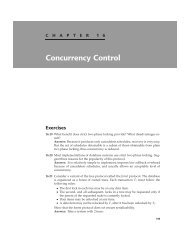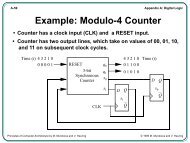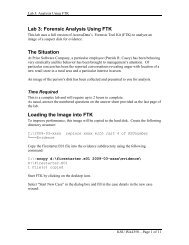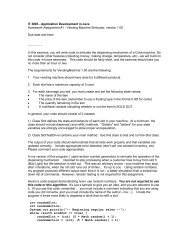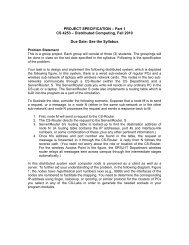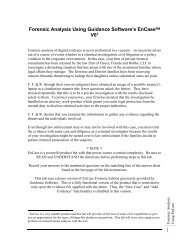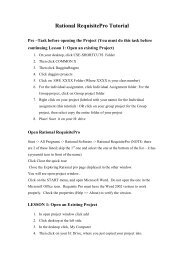Create successful ePaper yourself
Turn your PDF publications into a flip-book with our unique Google optimized e-Paper software.
6.4 Stepping Through a Program<br />
DRAFT, February 18, 2003, Page 66<br />
After the program stops at the breakpoint, the you can use the icons at the top of the debug pane to<br />
single step, step into a method call, step out of a method, run to the cursor, pause the current thread,<br />
resume, and suspend new thread, while watching the call stack and contents of variables change<br />
dynamically. The integrated debugger is especially useful for watching the creation of objects as the user<br />
steps through various levels of constructors. The jGRASP debugger can be used very effectively to<br />
explain programs, since a major part of understanding a program is keeping track (mentally or otherwise)<br />
of the state of the program as one reads from line to line. .<br />
We will make two passes through the example program as we explain it. During the first pass, we will<br />
“step” through the program without “stepping into” any of the method calls, and we will concentrate on the<br />
Variable section. In Figure 50, Variables/Settings pane indicates no local variables have been declared.<br />
Figure 51 shows the results of “stepping” to the next statement. Notice that under Locals in the<br />
Figure 51. Desktop after hemingway (Book) object is created





